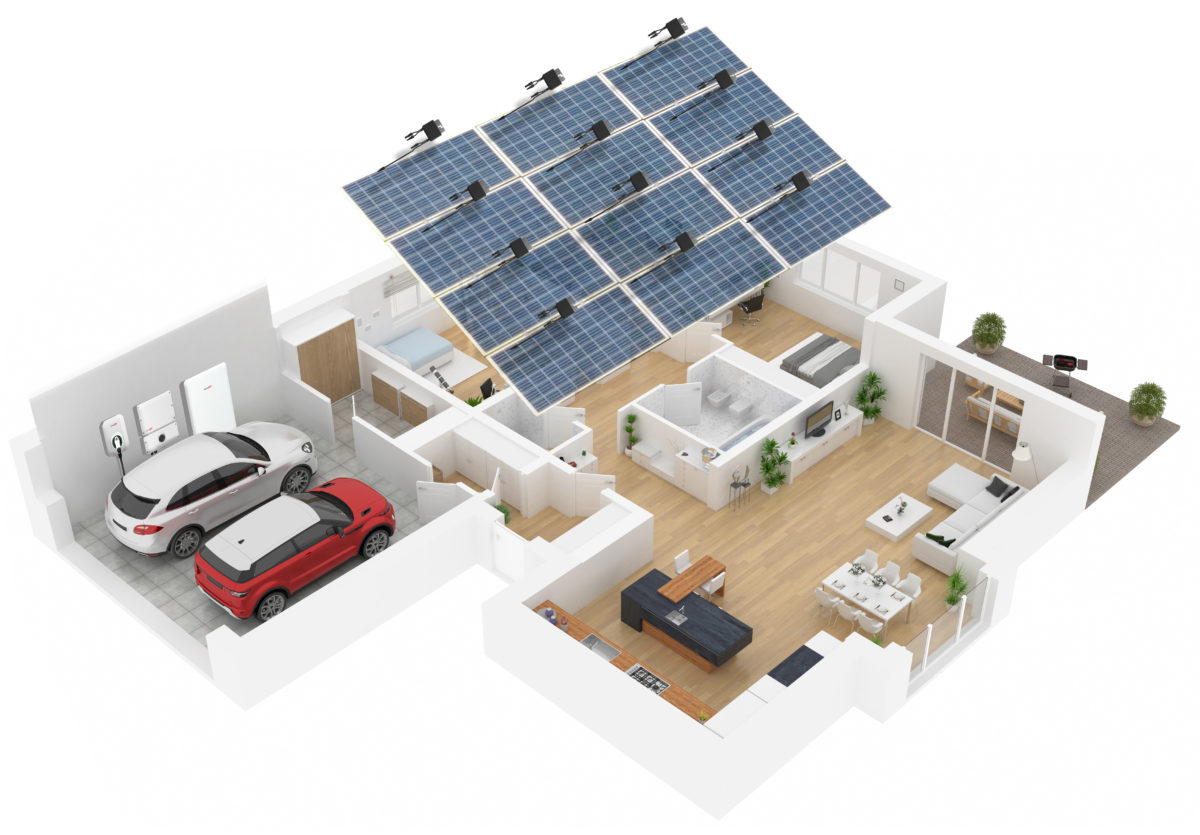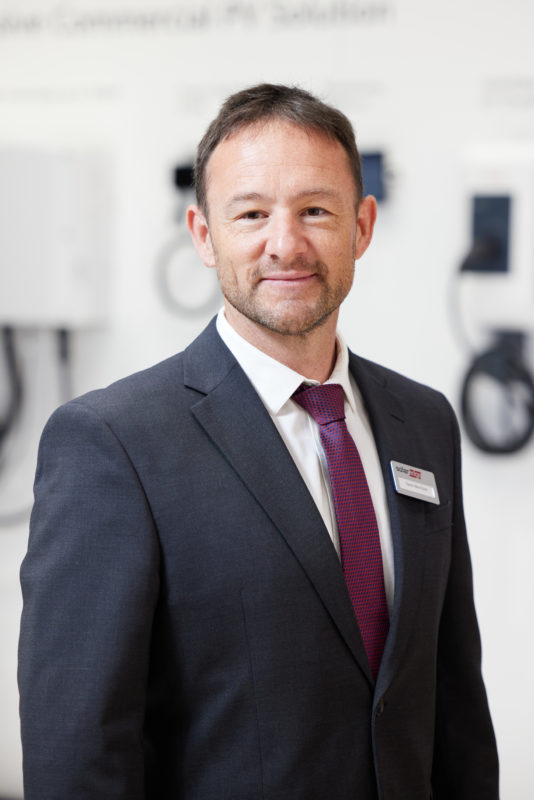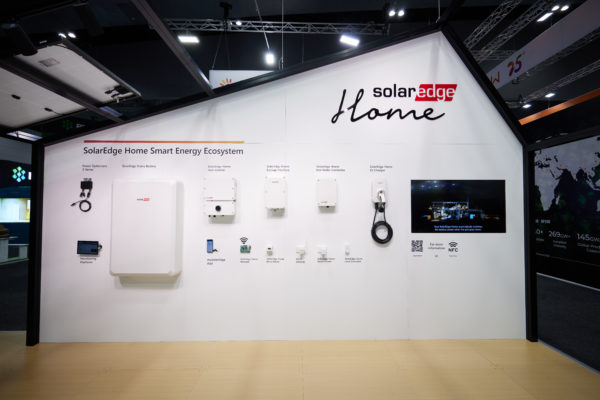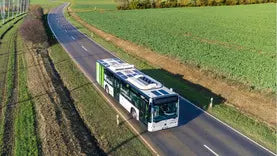https://www.pv-magazine-australia.com/2022/11/24/energy-optimiser-solaredge-expands-into-full-home-solution/

SolarEdge intends to lift the roof on home energy efficiency management.
Image: SolarEdge
pv magazine: SolarEdge recently exhibited at the All-Energy conference in Melbourne. What’s the intel on how customer thinking has evolved over the past couple of years?
Gavin Merchant: A lot of customers are interested in SolarEdge home battery, which is our latest product this year, but real smart home systems are a big focus at the moment.
SolarEdge is most renowned for its solar optimisation technology. How has it built out from there?
SolarEdge started with optimised inverters. A SolarEdge system comprises an optimiser which converts the energy at the roof level and then provides the electricity for the inverter which is the conversion brain. Our aim has always been to make more solar energy accessible to the user. Over time, our inverters have been developed into a more comprehensive suite of load controls, home automation, EV charging, batteries, backup — a full suite.
We also now provide solar panels, so we have this one-vendor solution for SolarEdge Home.
A few companies now have the full-stack residential solution, and digital smart home managers are proliferating. How is SolarEdge Home different?
Other companies have a home solution that includes solar panels, batteries and some level of control. But this integrated, optimised solution is something that SolarEdge really invented. It was an industry first, when SolarEdge started with the concept in 2012, and now our Home Hub Inverter solution uses one inverter to manage solar energy, modular battery storage and smart consumption.
The point to really clarify here is that often people think of smart homes as being able to turn on and off all those low power consumption devices like televisions, washing machines or lights, but we see the smart home as being able to truly control large loads, like pool pumps, air conditioners EVs, and batteries, prioritizing when and where you use your energy.

Image: SolarEdge
Inverter manufacturers have had some challenges in responding to regulations on how their products integrate with and respond to the grid in Australia. How has SolarEdge managed the changes?
It hasn’t been arduous for the Australian team. Our personnel have helped write some of the standards for Australia, and SolarEdge is able to respond quite quickly to any mandated changes. For example, in South Australia, changes were recently put in place to enable dynamic control of voltage. We’re able to remotely adjust our deployed inverters because they’re live connected. We can even do remote fleet upgrades across the country, so we’re quite fortunate in having the power of that system to be able to respond to changing regulations.
How is Australia’s battery market viewed by SolarEdge?
We launched our SolarEdge Home Battery in Australia this year and it’s been extremely successful. We’ve installed over 1000 units already and we’re looking for very rapid growth next year as well.
Battery prices were forecast to reduce as production and sales scaled, but that’s no longer the case, is it? How are market dynamics nonetheless favouring battery adoption?
Prices are going up and it’s mainly attributable to raw materials. At the moment there are supply shortages of lithium because of the global adoption of EVs. So there are constraints on raw materials, then add inflation and rising logistical costs, and we’ve seen prices increase. I think that will stabilise and we’ll see some efficiencies come through in the next few years, though probably not next year.
Still, the economics are very much in favour of batteries at the moment because we’re seeing the price of electricity go up. The federal government forecast 58% rises over the next 18 months, which is significant. So customers are looking to maximise self consumption of their solar electricity; they want to store the excess that they generate during the day to use at night.
What’s the differentiating premise behind SolarEdge batteries?
It’s very simple. We have a 10 kWh battery delivering a 98% efficiency round trip. Then, our batteries are stackable. So on the one inverter, you can have 10, 20 or 30 kilowatt hours.
I think Australians really like to be independent, and they like to have security of supply. One thing that’s not widely known is that just having a battery installed doesn’t necessarily mean you’ll have access to stored power when the grid goes down. You must have a backup capability, a backup circuit, which SolarEdge has been offering since 2016.

Image: SolarEdge
Beyond empowering the independent home, SolarEdge has a strong presence in commercial and industrial (C&I) solar systems. What are you targeting there?
Our forte is what we call C&I Rooftop. So far, we’ve had success in Australia with systems of up to five megawatts. Clients are very interested in SolarEdge because of its safety aspect. Optimisers offer an inherent safety technology and rapid shutdown, which is important to business owners who are looking to ensure safety on their rooftops. You know, if they’ve got people on the roof, maybe maintenance people working on other equipment such as air con, they want to be confident that the roof is de-energised.
Also optimiser technology allows you to utilise all available rooftop areas. On industrial roofs, you have soft zones created by roof access, stacks, air conditioning units — the topography can be very complex. You might also have shading from other buildings. So shading is a big deal. Using optimisers, you don’t have those areas of darkness that would be unavailable to traditional PV systems. We’re able to put more capacity on the roof and obviously you get more generation from that.
SolarEdge is attractive to the Australian C&I market because of these features. And I expect that next year with electricity prices going as high as 6x for power purchase agreements, we’ll see a really big uptake of commercial solar systems.
How is SolarEdge managing supply chains, manufacturing and delivery to customers in the current environment?
The majority of our product is produced by contract manufacturing, but SolarEdge also has in-house manufacturing at a state of the art facility in the north of Israel.
I was there in June. It’s fully automated. Every component is pre qualified and tested and then every sub assembly is tested and burnt in and then the final assembly is tested before it goes to the customer. So every product is perfect out of the factory.
We also have factories in Mexico, in Vietnam, China and Eastern Europe. It’s very much a global company, which helps support the business through supply challenges. The world has changed a lot again this year, and we need to be able to adapt quite quickly with a company of this size.
I started with SolarEdge in 2015 and we’ve seen a lot of development over the years. SolarEdge has been innovating very rapidly and has grown to become a multi billion dollar company.
This content is protected by copyright and may not be reused. If you want to cooperate with us and would like to reuse some of our content, please contact: editors@pv-magazine.com.
<




